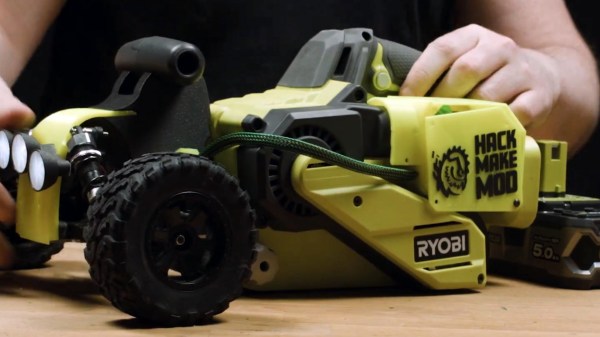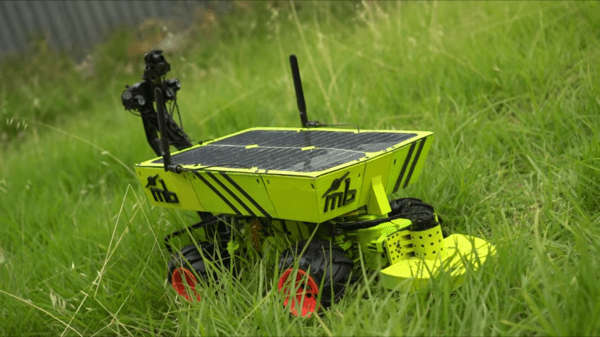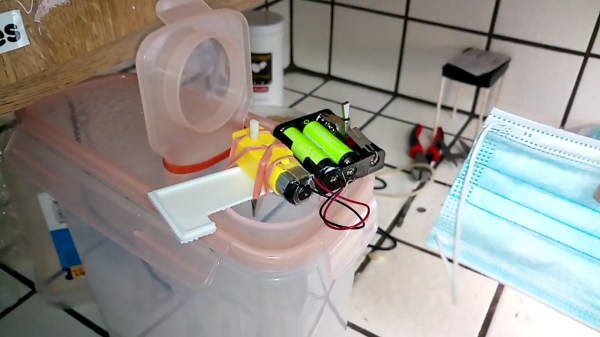As a child, [David Windestal] already knew that a belt sander was the perfect motor for a banging radio-controlled car. Many years later, the realization of that dream is everything he could have hoped for.
The core of this project is a battery-powered belt sander by a well known manufacturer of gnarly yellow power tools. With an eye for using bespoke 3D printed parts, the conversion appeared straightforward – slap on (or snap on) a pre-loved steering mechanism, add a servo for controlling the sander’s trigger, and that’s pretty much job done. Naturally the intention was to use sandpaper as tread, which is acceptable for outdoor use but not exactly ideal for indoors. A thermoplastic polyurethane (TPU) tread was designed and printed for playtime on the living room floor, where sandpaper may be frowned upon.
The finished product is a mean looking toy with plenty of power. What we really like most about this hack is the commitment to the aesthetics. It’s seriously impressive to see a belt sander so convincingly transformed into a three-wheeler radio-controlled car. The final iteration is also completely reversible, meaning that your belt sander can keep on sanding two by fours on the job site. All the printed parts snap snug into place and are mostly indistinguishable from the stock sander.
Speaking of reversible, there were just a couple of issues with the initial design, if you catch our drift. We won’t spoil what happens, but make sure to watch the video after the break for the full story.
If this hack has whet your appetite for more quirky tool hacks, make sure to check out our coverage of the angle grinder turned slimline belt sander. Or if you can’t get enough of RC, then check out this remote controlled car with active suspension.
Continue reading “Boring Belt Sander Is RC Racer In Disguise”
















